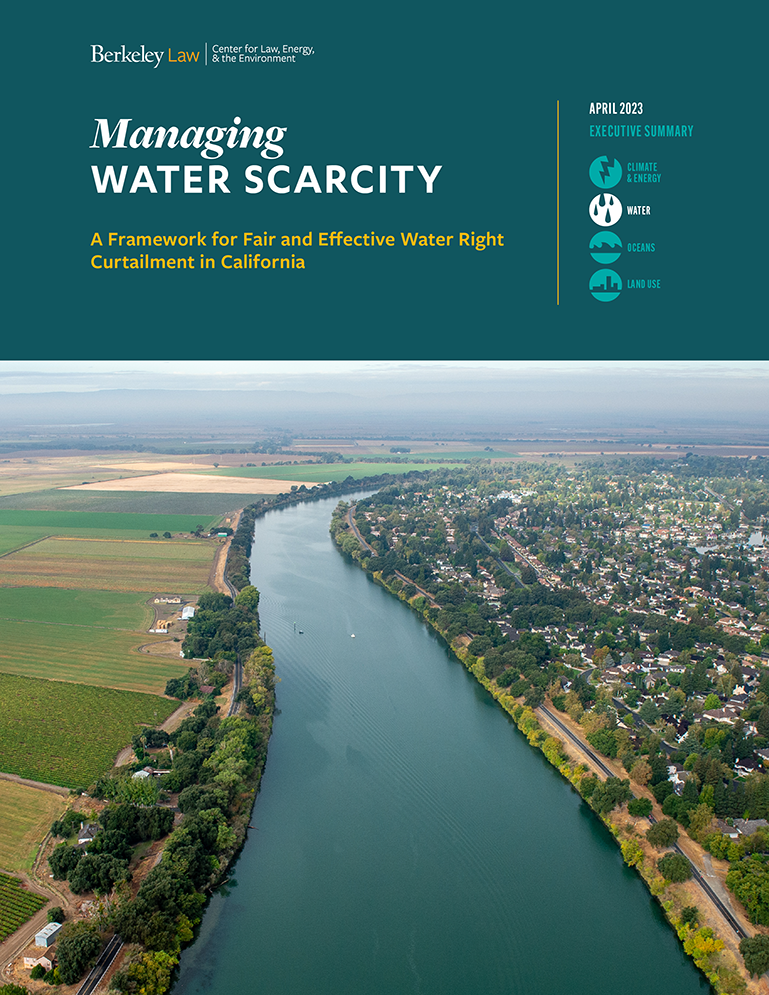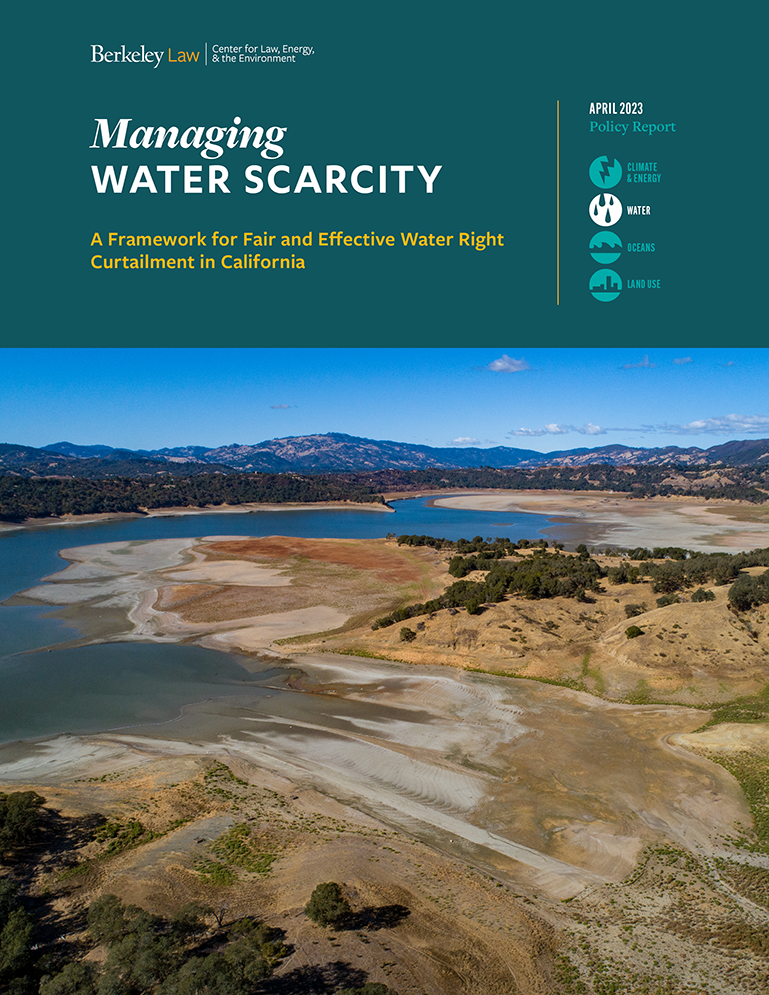April 2023
Drought is a core water management challenge for California, not an occasional concern or an unforeseen disaster. Historically, the state’s precipitation has varied more than anywhere else in the country. Now climate change is exacerbating this variability, supercharging California’s wet and dry extremes and the whiplash between them.
To avoid crisis during future droughts, the state needs to strengthen its capacity to fairly and effectively allocate water in times of scarcity.
When there is not enough water to satisfy all demands, water must be allocated among competing human and environmental uses. California’s State Water Resources Control Board (SWRCB) is responsible for ensuring that surface water is diverted and used in accordance with state and federal legal requirements and policy priorities. To fulfill this role, the SWRCB needs to be able to routinely require diverters to curtail unlawful water uses in order to protect water rights, human health and safety, and the environment from serious harm. But the agency has struggled to carry out this basic function, only rarely implementing curtailments, as we detailed in a pair of 2018 reports. Despite recent advances, resource constraints and a range of technical, legal, and political barriers continue to stand in the way of progress.
Our new report explains how to bring the SWRCB’s capabilities in line with California’s needs.
The report describes the legal context for water right curtailments in California, summarizes the history of curtailment practices in the state, and recommends actions California can take to build an effective framework for curtailment. The SWRCB can implement some of the actions we recommend on its own. But we also recommend swift and decisive legislative action to clarify and enhance the agency’s tools and authority.
Our recommendations are organized around three categories of action:
-
- The SWRCB can establish a basic framework for curtailments through non-emergency rulemaking.
- The Legislature can take actions to update the SWRCB’s statutory toolset for implementing curtailments. These actions include enabling more effective curtailment regulations and enhancing curtailment enforcement options.
- The SWRCB can take actions, with legislative support, to improve engagement and information for fair and effective curtailments.
The report offers a detailed framework and rationale the state can use to modernize one of its most basic functions during times of water shortage: implementing water right curtailments. Together, the actions we propose will help California manage water scarcity more fairly and effectively.
Download the EXECUTIVE SUMMARY.
Read our Legal Planet blog post.
Read our op-ed in the San Francisco Chronicle.
For more information:
Contact Nell Green Nylen, Senior Research Fellow, Wheeler Water Institute, Center for Law, Energy & the Environment
_________________________
This work is part of a larger project aimed at improving California water rights administration for future droughts that builds on our 2018 reports for California’s Fourth Climate Change Assessment. It was funded by the State Water Resources Control Board (Agreement Number 19-067-300), with additional support from Agriculture and Food Research Initiative Competitive Grant no. 2021-69012-35916 from the USDA National Institute of Food and Agriculture via the Secure Water Future project.

